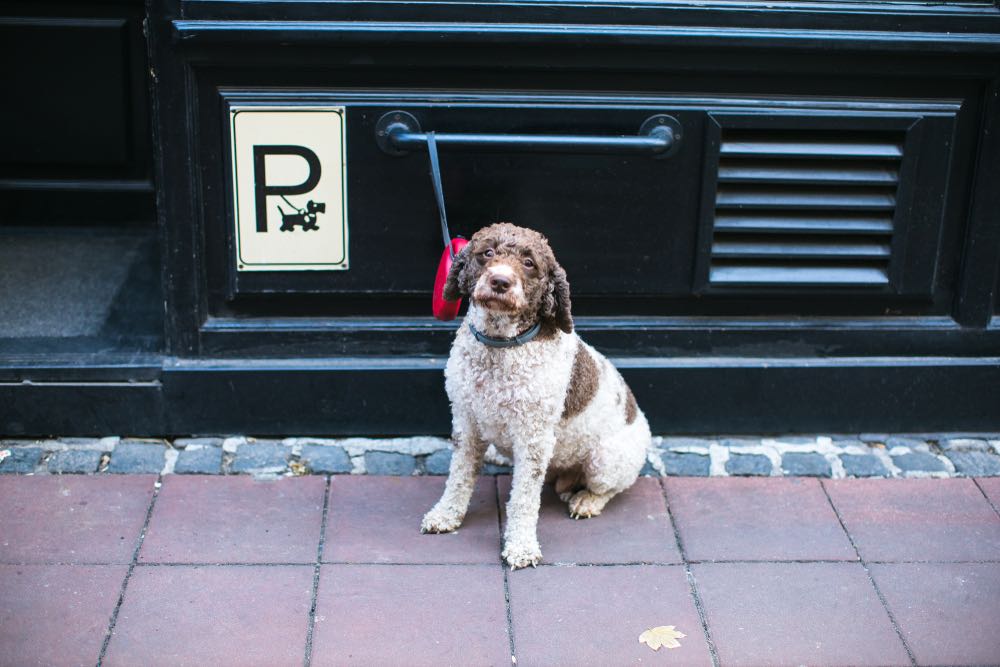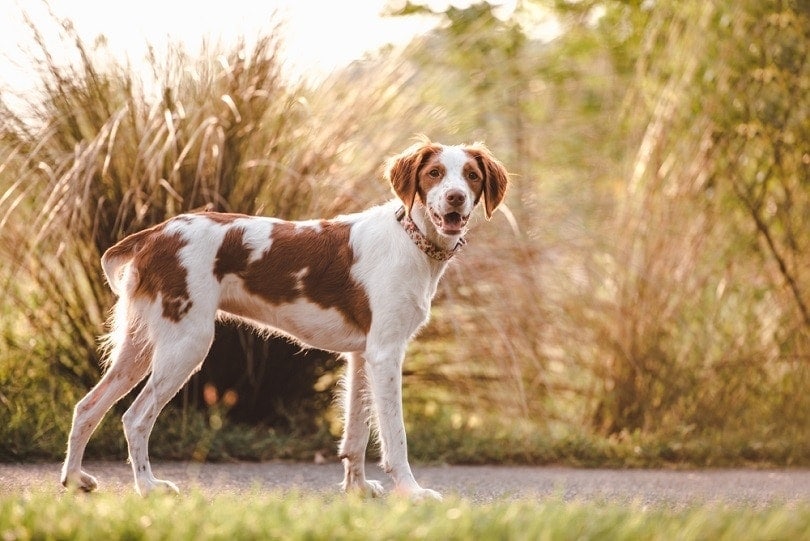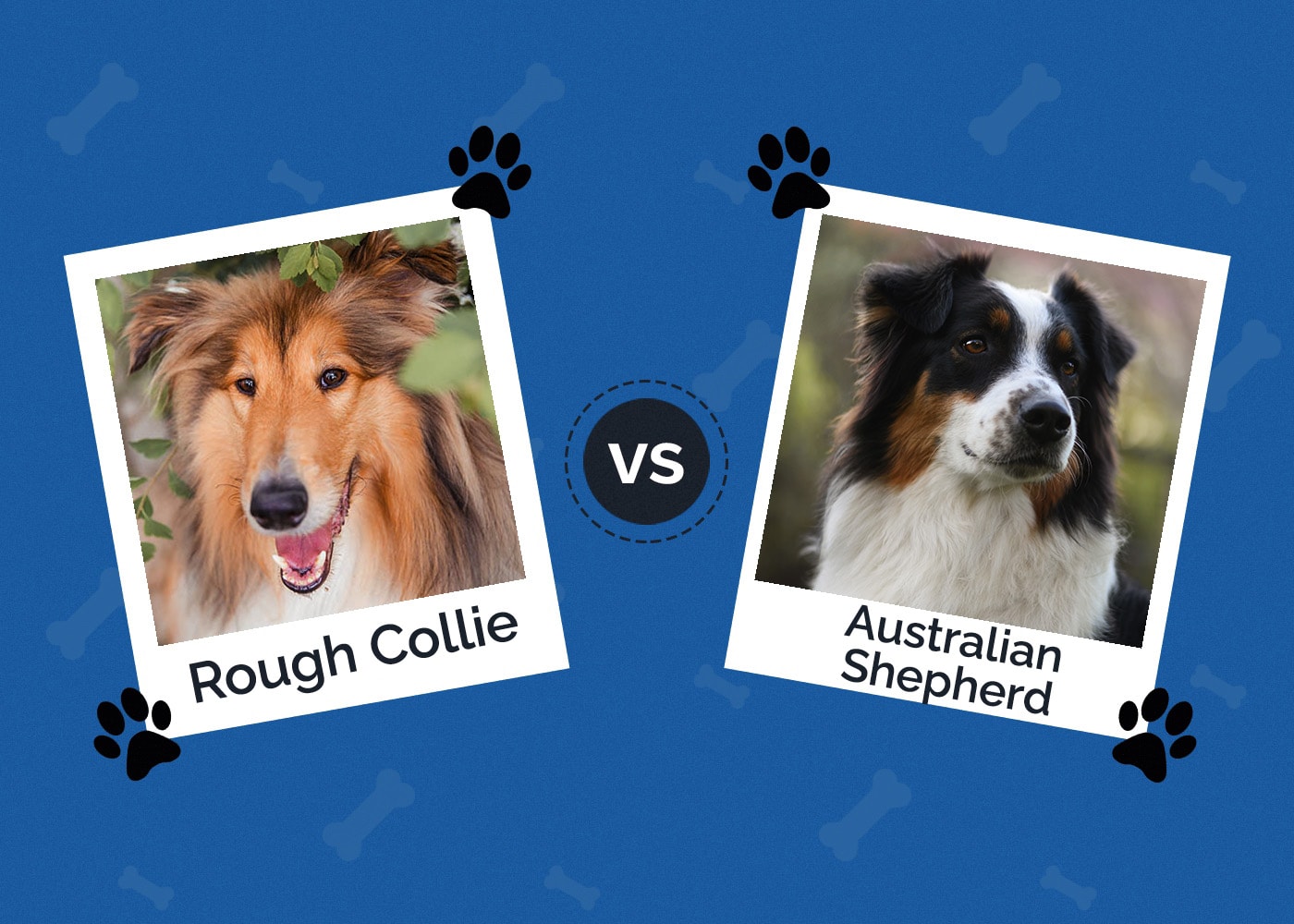Aussiedoodle vs Goldendoodle: The Differences (With Pictures)

Updated on
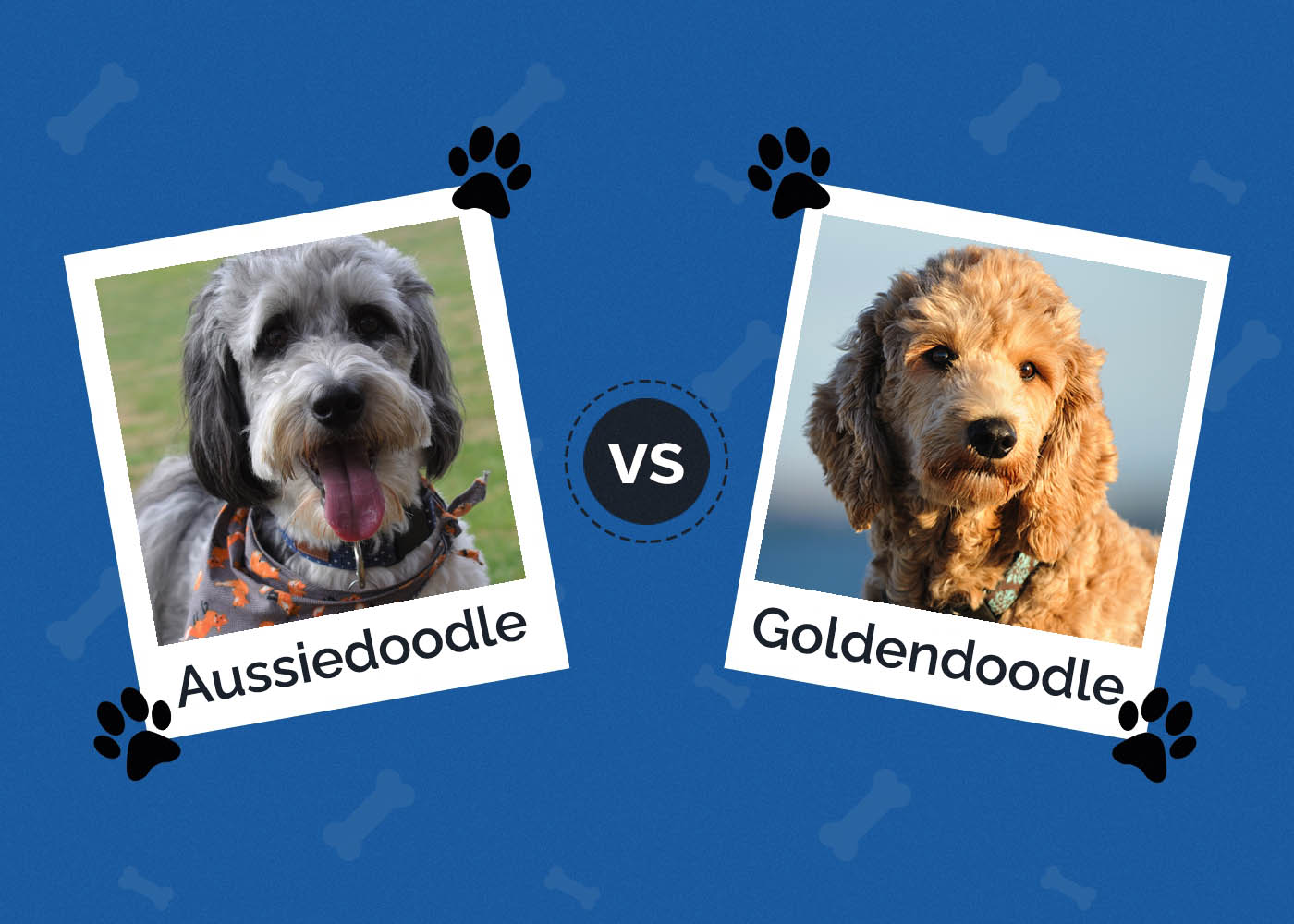
Click to Skip Ahead
Both of these dogs are crossbreeds, and both have Poodle in their heritage. They also grow to a similar size, although the Aussiedoodle tends to be a little taller, and both tend to benefit from the more hypoallergenic fur of the Poodle parent.
But with the Aussiedoodle having an Australian Shepherd parent and the Goldendoodle having Golden Retriever parentage, there are some distinct differences between these two breeds. The Goldendoodle tends to be more laid back than the potentially hyper Aussiedoodle, for example, and the herding background of the Aussiedoodle means it may be prone to herding. But the Aussiedoodle is ideal for those looking for an active and highly intelligent breed.
Read on for more about these two Poodle mixed breeds and to determine which is the ideal fit for your family.
Visual Differences
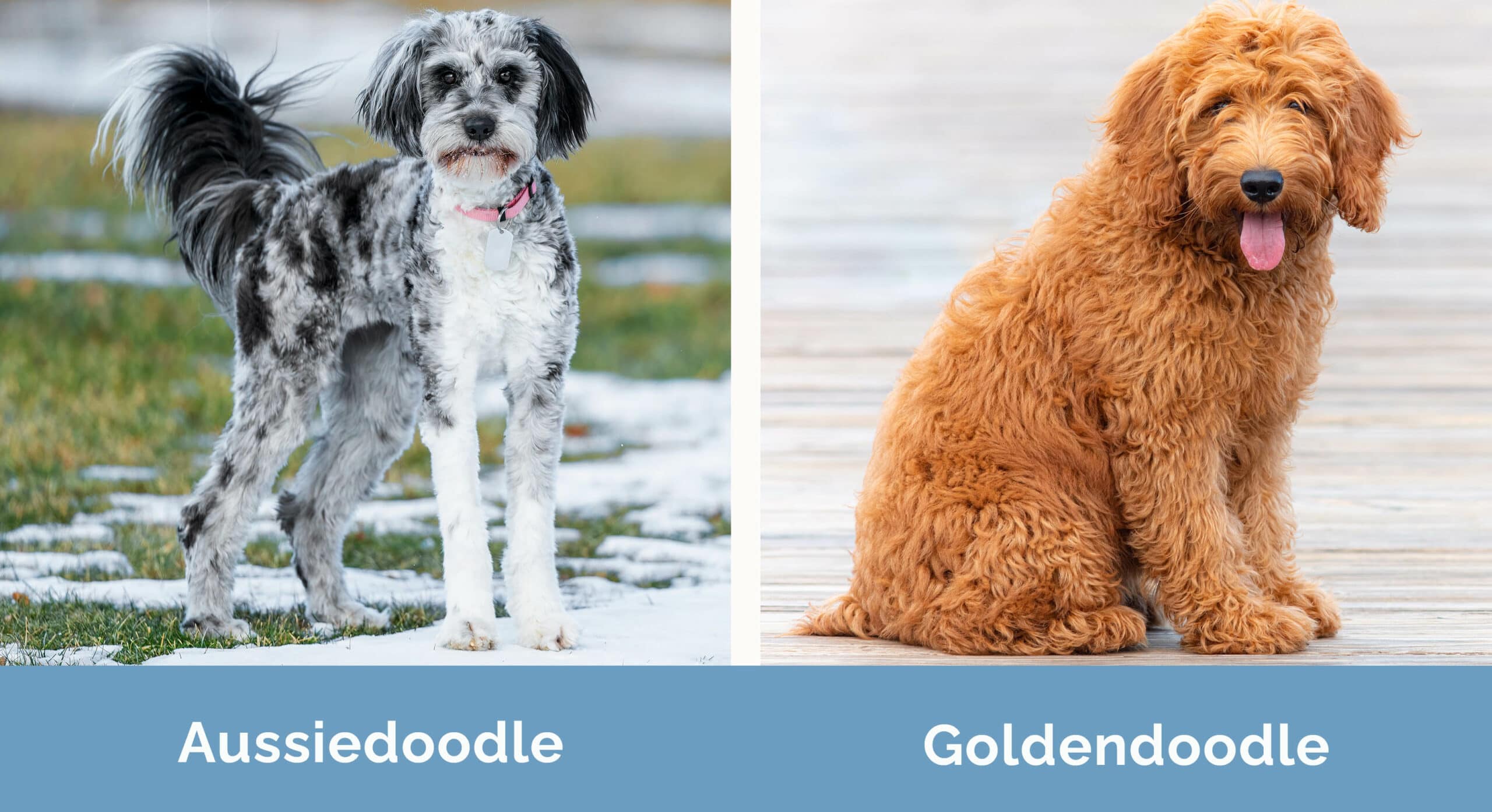
At a Glance
- Average height (adult): 10–15 inches
- Average weight (adult): 25–70 pounds
- Lifespan: 10–13 years
- Exercise: 90+ minutes a day
- Grooming needs: Moderate
- Family-friendly: Yes
- Other pet-friendly: Usually
- Trainability: Highly intelligent, quick to learn, intense, herding instinct
- Average height (adult): 20–24 inches
- Average weight (adult): 50–90 pounds
- Lifespan: 10–15 years
- Exercise: 1+ hours a day
- Grooming needs: Moderate
- Family-friendly: Yes
- Other pet-friendly: Usually
- Trainability: Intelligent, easy to train, potentially mischievous
Aussiedoodle Overview

The Aussiedoodle is a hybrid breed that combines the Poodle and Australian Shepherd. It is likely that the breed has accidentally been bred for many centuries, but it was first intentionally bred around the year 2000. It was first bred in the US where the Australian Shepherd actually hails from, and it was bred as a companion dog. It was seen as a more hypoallergenic alternative to the Australian Shepherd. Because it does retain some of its Australian Shepherd tendencies and combines these with the intelligence of the Poodle, it can also turn its hand to most working tasks. The size of the breed can vary according to whether the Australian Shepherd was crossed with a miniature or standard Poodle.
Personality/Character
The Australian Shepherd is a natural herding dog. It has enough stamina to run all day and still has enough energy to go for a long, vigorous walk in the evening. It is also very intelligent and will get along with everybody in the family but will be especially close to those that throw a ball or play games with it, and it will likely form an especially close bond with one or two people within the family unit.
It will get along with strangers, can be introduced to other pets, and is good with children. The addition of a Poodle to the parentage may have tempered the excitable nature of the Aussie a little, but you should still expect a playful, lively dog that requires a lot of exercise and stimulation.

Training
Both parent breeds are considered highly intelligent, which means you can expect the Aussiedoodle to be equally intelligent. It will learn commands and desired behaviors quickly, generally only requiring a few repetitions before it takes to the task at hand. Early training should probably concentrate on discouraging herding behavior.
Left unchecked, an Aussiedoodle may try and herd other pets, and even children and adults, into an organized group. They won’t be aggressive when doing so, but they may nip at heels to get the job done. Training can also help curb some of the enthusiasm that this breed displays.
Health & Care
Although this is a generally healthy breed, there are a few health conditions that the Aussiedoodle is more susceptible to. Watch for signs of lameness or limping because this could be a sign of hip dysplasia. Also, monitor the eyes and look for signs of irritation and pain because progressive retinal atrophy is a concern, and so too are cataracts. Probably the most dominant aspect of Aussiedoodle care is ensuring they get enough exercise.
At an absolute minimum, you will need to provide an hour of exercise every day, and this can include agility, flyball, or herding games as well as general walks. Brush daily to get rid of loose and dead hairs, bathe every few months, and trim nails every 2 or 3 months when you can hear them clicking on hard surfaces. You will also need to brush your dog’s teeth every couple of days, or even daily.

Suitable For:
Very active families looking for an intelligent dog and have time to meet the ongoing exercise requirements of such a busy dog.
- May cause fewer allergic reactions than other breeds
- Gets on well with family and strangers
- Very intelligent and easy to train
- Needs a lot of exercise
Goldendoodle Overview

The Goldendoodle is another breed that stems from the Poodle parent. This time, the Poodle has been bred with the Golden Retriever. The Retriever is a bigger dog than the Australian Shepherd, which means you can expect the Goldendoodle to be bigger than the Aussiedoodle. And, while the Aussiedoodle was first intentionally bred as a companion dog, the Goldendoodle was bred to be a service dog for those with dog allergies. It is intelligent, loyal, and eager to please its owners.
Personality/Character
The Goldendoodle makes an excellent family pet, having been bred from two of the world’s most popular companion dogs. As well as being very popular with families, Poodles and Golden Retrievers are also popular service dog breeds. The Golden Retriever has been used as a guide dog, therapy dog, search and rescue dog, and in a variety of other roles: roles that the Goldendoodle is also capable of undertaking.
It has a loving and affectionate nature, is a very understanding breed, and it is generally a calm and measured dog. If you already have dogs, the Goldendoodle should be easy to integrate into the family as it shouldn’t be territorial or aggressive towards your pets.

Training
Its utility as a service dog, in a host of different settings, points to the fact that the Goldendoodle can be easily trained. Its love of its humans and willingness to please also means that it is an easy breed to train. Early socialization is important with all breeds, although the Goldendoodle is a friendly and sociable dog that will usually get along with other canines, humans, and usually even cats.
Health & Care
Although it doesn’t need as much exercise as the Aussiedoodle, the Goldendoodle is still a high-energy dog. Although the Golden Retriever has found itself fulfilling a variety of service roles, it was originally bred as a retriever. It enjoys being outside, loves to fetch and carry, and tends to enjoy water. There is no reason to believe that the hybrid Goldendoodle will be any different.
It is a healthy breed but there are some conditions that the Goldendoodle is somewhat susceptible to. Hip dysplasia and elbow dysplasia are the abnormal development of the respective joints, and they can lead to arthritis or even lameness, but they are treatable and, if the problem is identified early, the prognosis tends to be good.
Goldendoodle coats can vary with some developing a Poodle-like coat and others that are more akin to those of the Golden Retriever. They can take quite a lot of brushing and grooming to ensure they look good and stay comfortable.
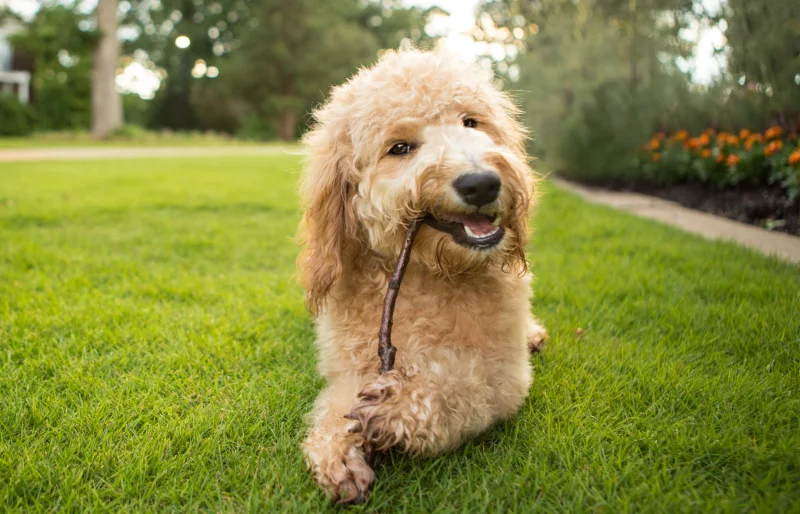
Suitable For:
Families looking for a loving and affectionate dog that isn’t too demanding of intensive exercise and that want a breed that is intelligent and easy to train.
- Doesn’t require as much exercise as the Aussiedoodle
- Friendly and good-natured
- Easy to train
- Can need a lot of grooming
The Differences Between Aussiedoodles and Goldendoodles
Size
Both the Aussiedoodle and the Goldendoodle can come in a wide range of sizes. This is primarily down to the Poodle parent. Poodles can come in miniature and standard sizes, and the size of the resulting hybrid will depend on which Poodle was used for breeding.
Generally, however, the Goldendoodle tends to be a little bigger than the Aussiedoodle because the Golden Retriever parent is bigger than the Australian Shepherd parent. While the Aussiedoodle can grow to 15 inches and 70 pounds, the Goldendoodle can reach 24 inches and 90 pounds.
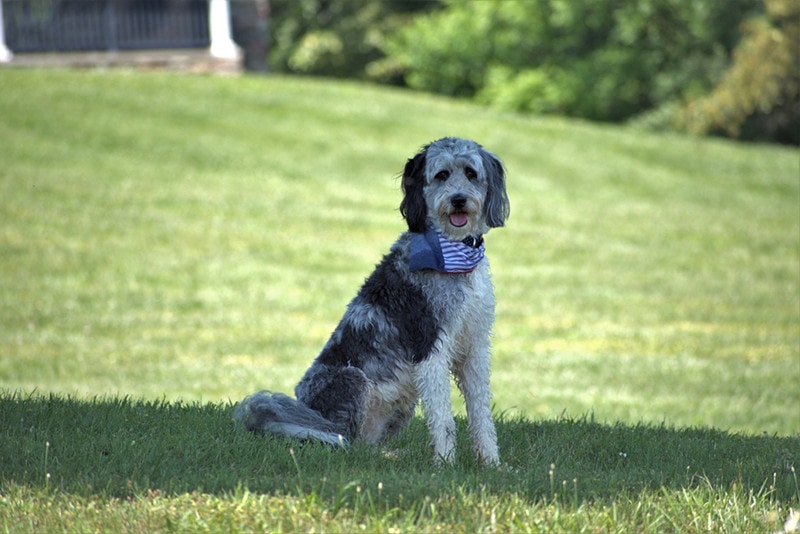
Exercise Requirements
Poodles do require plenty of exercise, and so too do Golden Retrievers, which were bred as working retrievers. But, of all the breeds involved, the Australian Shepherd has an insatiable appetite for exercise. Although not strictly a Collie, the Aussie originates from herding stock, and when used as a working dog, they would work the fields for several hours at a time, never tiring and seemingly capable of going again as soon as they have finished.
The Aussiedoodle shouldn’t be quite as high-octane as a purebred Aussie, but it will still have very high energy levels. Expect to provide a bare minimum of 60 minutes a day of exercise for the Aussiedoodle. But, if you’re a sporty, adventurous type that likes to get out on long hikes or runs, the Aussiedoodle could be the perfect companion.
Golden Retrievers seem to come alive in cold weather and they love nothing more than playing in water, whether it’s a nice clean pool or a dirty creek. The Goldendoodle will be more inclined to take a break after a hard walk, though.
Grooming
Grooming is a part of pet ownership, regardless of the breed you choose. You will need to help care for your dog’s dental and nail health, brushing teeth at least three times a week and clipping nails every 2 or 3 months. Regular bathing is also important, although not so regular that you risk damaging or stripping the natural oil found in dogs’ coats that help protect the fur and skin.
There are other aspects to grooming, too, which will likely become a daily part of your life. Both the Aussiedoodle and Goldendoodle are lower shedding than the Australian Shepherd or the Golden Retriever, but this doesn’t mean they are lower maintenance. Regular brushing will keep the coat in good condition and because it removes dead hairs and knots, it also helps maintain comfort for your dog.
Daily brushing of both breeds is ideal, and thrice weekly brushing should be considered the minimum. The Goldendoodle does tend to have a beard, and this will get covered in food and water and require daily cleaning, which, along with the breed’s love of jumping in water, makes it slightly higher maintenance than the Aussiedoodle.
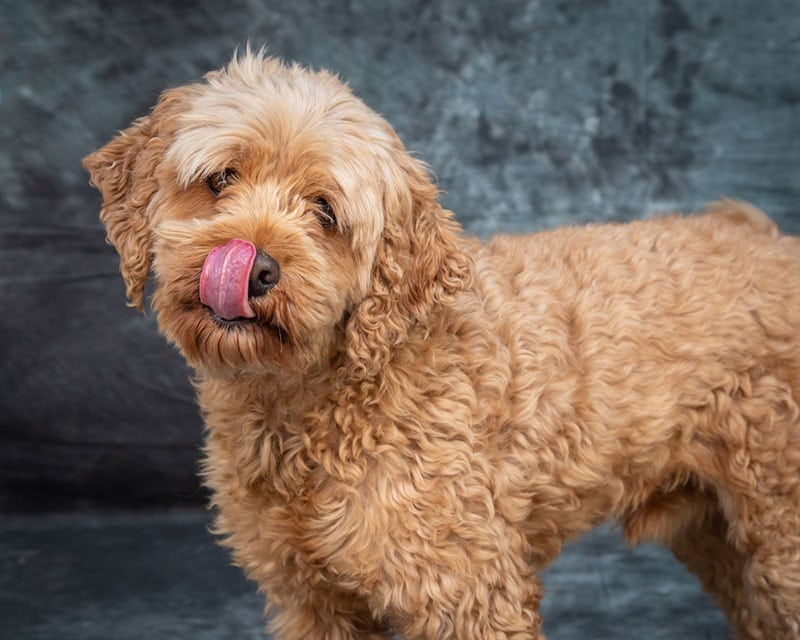
Dependence and Independence
Australian Shepherds do make loving pets, but they are quite independent. They would spend entire days in the field and while they would have guidance from their handlers, they would also be perfectly capable of fending for themselves. As such, the Aussiedoodle tends to be quite independent, too. This is good for those that go out to work or leave the house for hours at a time.
The Goldendoodle tends to be more dependent on its owners. It might even be described as a “Velcro dog,” following you everywhere you go, and can suffer separation anxiety if left alone for too long. If you are at home or can provide company in some other way, you will get a dog that loves nothing more than being in your company, though, and will gladly share the couch with you.
Which Breed Is Right for You?
The Goldendoodle and Aussiedoodle are two hybrid breeds that have been created by mixing the Poodle with another breed: in this case, the Golden Retriever and the Australian Shepherd, respectively. Both breeds are intelligent, make good companions, and can be trained.
The Aussiedoodle does need more exercise but is also more independent so can be left for longer periods. The Goldendoodle still requires exercise and is best suited to owners who enjoy getting out of the house, but their needs aren’t quite as demanding. However, the Goldendoodle can suffer separation anxiety if left alone too long and its coat tends to demand more attention when it comes to regular grooming.
Related Reads:
- F2B Goldendoodle: Pictures, Facts & FAQ
- Australian Labradoodle vs Goldendoodle: The Differences (With Pictures)
Featured Image Credit: (L) IK Photography, Shutterstock | (R) everydoghasastory, Shutterstock




